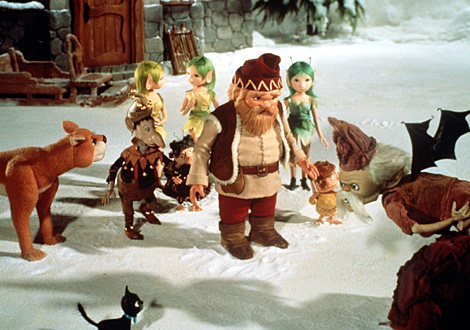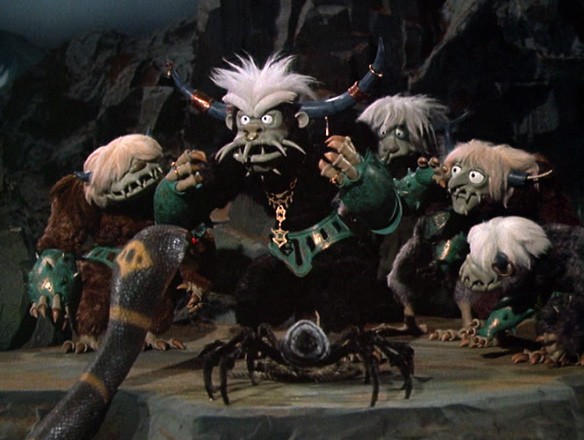Why is the Santa of “The Life and Adventures of Santa Claus” an original and strange figure?
While it does not take long to find uses of the fantastic in the catalog of TV holiday specials produced by Rankin-Bass, such as the Bumble in Rudolph the Red-Nosed Reindeer (1964) and the Winter Warlock in Santa Claus is Comin’ to Town (1970), what sets The Life and Adventures of Santa Claus (1985) apart is its complete departure from and reintegration of reality in order to explain the origins of Santa Claus to its viewers. The most common element present in Rankin-Bass Christmas specials that feature Santa Claus is the pairing of real-world hardships with the need for a figure who brings hope and joy to people around the world. The Life and Adventures of Santa Claus takes that combination and situates Claus as a mythical hero who endures trials and is ultimately rewarded with god-like immortality for his efforts.

With its nymphs, knooks, and ryls inhabiting the Forest of Burzee, a land untouched by mortal hands until the arrival of the infant Claus, The Life and Adventures of Santa Claus seems more Lord of the Rings than typical Christmas story (specifically with its haunting chant “Ora e Sempre” and its battle sequence of good Immortals versus the evil and monstrous Awgwas).

The resemblance is due to its source material. Unlike other Rankin-Bass specials that took their inspiration from popular Christmas songs and built stories around them, The Life and Adventures of Santa Claus is an adaptation of L. Frank Baum’s 1902 children’s book of the same name. Baum, author of The Wonderful Wizard of Oz which gave rise to The Wizard of Oz (1939), utilized his life experiences and turned them into fantasy in order tell his stories unflinchingly yet keep them child-appropriate. Much like Oz makes allusions to the American depression of the late 1890s, Baum’s The Life and Adventures of Santa Claus depicts the suffering of children throughout the world—those who are victims of poverty, abuse, and neglect—as reason for Claus’s need to make and deliver toys.
Meanwhile, his story’s fantastic settings and characters soften the delivery of this information to its young audience. Rankin-Bass’s claymation adaptation takes this concept further, spending the majority of its running time focused on the fantastic and keeping the depictions of the cruelty inflicted on children to a minimum for its mid-1980s television audience. The emphasis is then turned to Claus as a man who is susceptible to death as any mortal being is; his goodness and caring for others are not enough to save him from this reality. It is only through the final intervention of a council of mythical beings that Claus is saved when he receives the Mantle of Immortality.
In comparison to the other Rankin-Bass conceptualizations of Santa Claus (most of whom exist within one continuous storyline), the Claus of The Life and Adventures of Santa Claus does not solve all the unhappiness of children in the world by making toys. The fantastic and otherworldly elements of the plot help to heighten Claus’s empathy through exposing him to the brutality of war and the pain that can be inflicted on children. Witnessing hardship strengthens his devotion to alleviating suffering where he can, making him the most human and heartfelt of all Rankin-Bass’s Santas.

